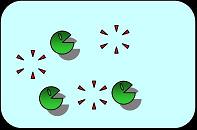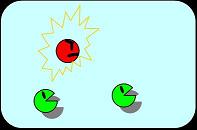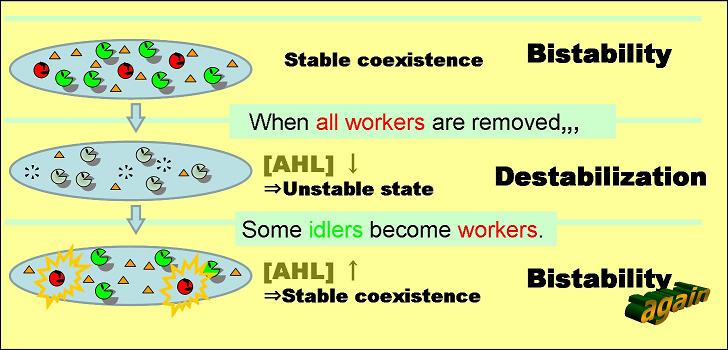Tokyo/Model
From 2007.igem.org
(Difference between revisions)
(/* To establish a system following Pareto’s principle(for example Ant society), the system must satisfy the following three cases. In our model, all nodes have the same genetic circuits and take two states, A (worker) and B (idler), d) |
(/* To follow Pareto’s principle like Ant society, our model system must follow the three cases in Fig 1 to 3. In our model, all nodes (individual cells) have the same genetic circuits but take two states, A (worker) and B (idler), dep) |
||
| Line 1: | Line 1: | ||
==[[Tokyo_Tech|Abstruct]] [[Tokyo/Model|Concept & Model]] [[Tokyo/Requirements |Requirements]] [[Tokyo/Genetic circuit|Genetic_circuit]] [[Tokyo/Works|Works]] [[Tokyo/about our team|About_our_team]]== | ==[[Tokyo_Tech|Abstruct]] [[Tokyo/Model|Concept & Model]] [[Tokyo/Requirements |Requirements]] [[Tokyo/Genetic circuit|Genetic_circuit]] [[Tokyo/Works|Works]] [[Tokyo/about our team|About_our_team]]== | ||
| - | + | ''' To follow Pareto’s principle like [[Tokyo/Concepts|Ant society]], our model system must follow the three cases in Fig 1 to 3. In our model, all nodes (individual cells) have the same genetic circuits but take two states, A (worker) and B (idler), depending on the surrounding circumstances.''' | |
| - | + | <br> | |
'''Condition 1. Bistable state''' | '''Condition 1. Bistable state''' | ||
Revision as of 13:21, 23 October 2007
Abstruct Concept & Model Requirements Genetic_circuit Works About_our_team
To follow Pareto’s principle like Ant society, our model system must follow the three cases in Fig 1 to 3. In our model, all nodes (individual cells) have the same genetic circuits but take two states, A (worker) and B (idler), depending on the surrounding circumstances.
Condition 1. Bistable state

The system is stable containing nodes A and B at certain ratio.
Condition 2. Unstable state with node A removed

By removal of node A, the system containing only node B becomes unstable.
Condition 3. From unstable to stable state

In the unstable state, some node B become A while the others remain B. The system then becomes stable again.
